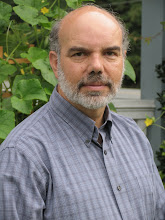 Memoirs From the Asylum by Kenneth Weene
Memoirs From the Asylum by Kenneth WeeneMy rating: 5 of 5 stars
Memoirs from the Asylum takes its readers to a unique world as it helps them understand the thoughts and feelings of the people who reside there. Its setting isn't a strange country or a fictional land, but a building that could be a short distance from any of our homes. The behavior of the characters is shocking, but the shock makes sense in the strange logic of their world, a logic that stems from fear, resentment, and a need to find some control over lives that have wandered far from the path of normalcy. Ken Weene’s novel shows the worst of people who have been labeled insane while revealing their basic humanity. It’s a powerful book.
The book is a novel structured like a memoir. The story begins in first person as told by one of the patients in the asylum then it switches to third person to tell about other patients as well as doctors. Yet the events still seem to be filtered through the perspective of the main narrator. This technique blurs the distinction between reality and fantasy in a way that leaves the reader with an excellent picture of a mental patient's world. Marilyn, a catatonic patient, is living her life in a fantasy world she's found within a crack in the sheetrock on her bedroom wall. Further on in the book another character, a doctor, appears to see the world Marilyn has created.
The pages of Memoirs from the Asylum are filled with strange, but intriguing characters. There's a patient named Allan who is content to spend his time staring at catatonic Marilyn. There's an air-guitarist who carries an empty guitar case everywhere he goes and another patient whose act of violence with a chair kills one of the doctors. And there are the fantasy characters such as Eric, the younger brother of Marilyn who somehow transforms into a dog and Timmy Wang, who exits Marilyn's story but leaves a body part behind.
The language in Weene's book can be outrageous at times, but it can also switch at any moment to elegant, beautiful descriptions. Here, for example, is one way Ken Weene describes life in the asylum.
If jazz is the music of life, how can we describe the music of the asylum? Discordant, raucous, lacking in form, it is the music of a creeping, groaning machine. The sound does not uplift, nor does it invite introspection. Its emotions are anxiety and loss. It is not sad, because it does not care. Wheels squeal in resistance to one another, off-key notes of electric energy fill the air like errant bolts of lightning from a demented god. Bangs and crashes of doors and tempers provide erratic tympani. One cannot dance in the asylum. However much one may whirl about the dayroom, it is not dancing. Dancing requires freedom. Music, real music, requires freedom.
Steve Lindahl – Author of Motherless Soul
View all my reviews







No comments:
Post a Comment